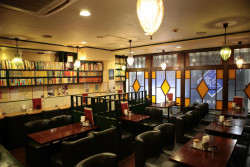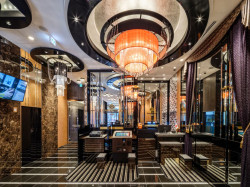
Originally published on metropolis.co.jp on November 2013

With three rounds remaining in the 2013 J.League season, the top five teams in the standings are far too close for comfort.
Ardija sink from new highs to the usual lows
At the halfway point of the season it was Omiya Ardija, the tiny club that could, who sat on top of the leaderboard. Why are they now in 13th place? A combination of key injuries and locker room malaise combined to create a perfect storm of failure, resulting in the Saitama side losing 15 out of their last 16 games. A coaching change and the arrival of Australia captain Lucas Neill did little to stem the bleeding and Ardija look to finish exactly where they have in all of their other J1 seasons.
Who wants to win it?
That’s the question everyone’s asking after 31 rounds, with just six points separating the top five clubs. With a lineup composed of 30-something veterans such as defenders Yuji ‘Bomberhead’ Nakazawa, Dutra and evergreen striker Marquinhos, Yokohama F. Marinos have made a significant push to their first title since 2004. Despite retaining the lead they stumbled to a loss before the international break without captain Shunsuke Nakamura, who is recovering from a gallbladder infection that could see him miss the rest of the season.
The Marinos’ woes have allowed Urawa Reds and defending champions Sanfrecce Hiroshima to catch up, with Kashima Antlers and Cerezo Osaka not far behind. In the league’s 20th season it is all too appropriate that one of its founding members will be declared winners – more than likely on the final day of the campaign.
The fall and rise of Nelsinho Baptista
After a solid unbeaten run in July and August, long-time Kashiwa Reysol manager Nelsinho had a surprising statement for the few press who stuck around after the team’s 3-1 loss at Kashima Antlers: he was resigning, with immediate effect. The unexpected announcement sent shockwaves across the league—until the Brazilian was eventually convinced to return to his post.
Despite the non-resignation story and Reysol’s mediocre league form, it has not been a completely disappointing year for the 2011 champions: the small Chiba outfit reached the semi-finals of the AFC Champions League, a feat not accomplished by a Japanese club since 2009. Though they would fall to eventual champions Guangzhou Evergrande, there was still a trophy in store as Reysol defeated Urawa Reds to capture the Yamazaki Nabisco Cup on November 2.
It was Nelsinho’s fifth domestic title at Reysol in four years following the 2010 J2 title, 2011 J1 championship, 2012 Supercup and 2012 Emperor’s Cup. Next year they’ll have a chance to win their first international trophy when they face the Copa Sudamerica winners in the Suruga Bank Championship.
Jubilost at sea
The relegations of FC Tokyo and Gamba Osaka to the J2 in recent years have shown that nobody is safe in the J.League, and this year that’s true of three-time league winners Jubilo Iwata. The Shizuoka side simply never got it together despite the mid-season hiring of London Olympic coach Takashi Sekizuka and the last-ditch signing of defender Michihiro Yasuda. With Jubilo’s relegation, confirmed in round 31, there are just four teams left (Marinos, Antlers, Nagoya Grampus and Shimizu S-Pulse) who have never played in the second division.
A southeast move for the J.League
While the newly announced two-stage season format that is scheduled to begin in 2015 has few fans, initiatives by the league to introduce Southeast Asian players to Japan have been slightly more successful. The arrival of Vietnam captain Le Cong Vinh at second-division Consadole Sapporo has brought a wave of interest from media and advertisers in the region. Successful trials this fall by Indonesia’s Andik Vermansyah at Ventforet Kofu and Thailand’s Chanthip Songkrasin at Shimizu S-Pulse have also turned heads.
Although plans have not been finalized, reports have surfaced that in 2014 J.League clubs (including those of the newly founded J3) will be allowed one extra roster spot for SEA players from countries such as Vietnam, Thailand, Myanmar, and Cambodia. With J1 broadcasts across the region having begun this year, the league’s strategy to expand into a prime developing market may set the tone for the next 20 years.
J.League soccer, various venues.







